Ultimate Guide To Wood Pellets
Imagine having a way to heat your home efficiently and cost-effectively.
That is what every homeowner wants, right?
However, at Zimmerman Mulch, we understand that many home heating options are available, and choosing the right one is tricky.
That is why we put together this article on wood pellets. In this article, you will learn about what wood pellets are, the types of pellets, how they benefit you, and even a few surprising ways you could use them!
Ready to get started?
Let’s begin!
What Are Wood Pellets?
First off, what are wood pellets?
Here is a brief description:
Wood pellets are little bullets of ground, dried wood. They can be made of sawdust, wood bark, palm kernels, coconut shells, discarded branches, paper waste, or other woody, burnable materials. Since they are so dry and compacted, they burn clean and hot, making them an excellent heat source for heating your home or cooking in a pellet grill or smoker.
How are wood pellets made?
Wood pellets can be made from all sorts of wood scraps: sawdust, small logs, wood chips, and even leftovers from furniture manufacturers.
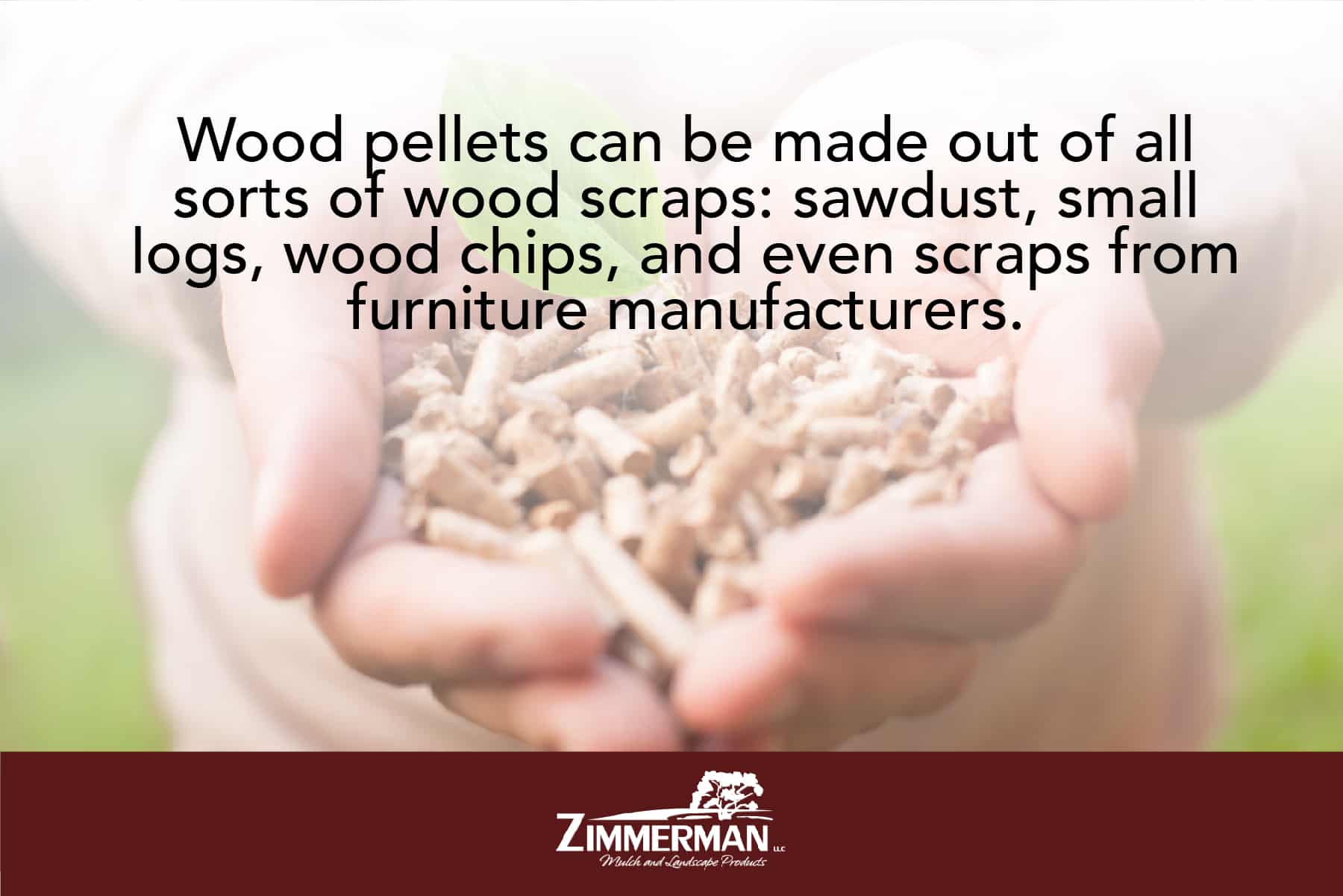
Here are the steps for how wood pellets are made.
- All the wood scraps are chopped into smaller bits to prepare them for grinding.
- The tiny bits of wood are sent through a machine that grinds them into finer pieces, like coarse sawdust.
- The fine pieces of wood are dried in a kiln to remove all excess moisture.
- The dried pieces are sent through an extruder that compresses the material into a tube shape and cuts it into small pellets. When it is compressed, the wood becomes hot, and the heat draws out a sticky substance in the wood called lignin, which helps the pellets hold their shape. If pellets are made correctly, the lignin should be enough to hold them together, so quality wood pellets do not contain a binder material.
- The pellets are cooled to make the lignin less sticky so the pellets don’t clump.
- The pellets are bagged and sent to stores.
There you have it! The result is a high-density, low-moisture wood pellet that burns like a candle.
By the way, did you know you can make your wood pellets at home? If you can access a lot of sawdust or wood scraps, buy a DIY pellet mill and try making your wood pellets.
But if you don’t feel like attempting to DIY them, you can easily purchase them in convenient 40-lb bags.
7 Benefits Of Wood Pellets
Now we know what wood pellets are. But why would you choose wood pellets over other kinds of fuel?
It turns out they come with a surprising amount of benefits. Here are a few of the main ones:
1. Higher BTUs than firewood
A BTU (British Thermal Unit) is a unit that measures energy, and it is the amount of energy it takes to raise the temperature of 1 pound of water by 1 degree. In short, the higher a material’s BTU, the more efficient the material is.
Since they are dried and compacted, wood pellets are more efficient than plain firewood - pellets are 350,000 BTU per cubic foot, whereas firewood is 70,000-90,000 BTU per cubic foot.
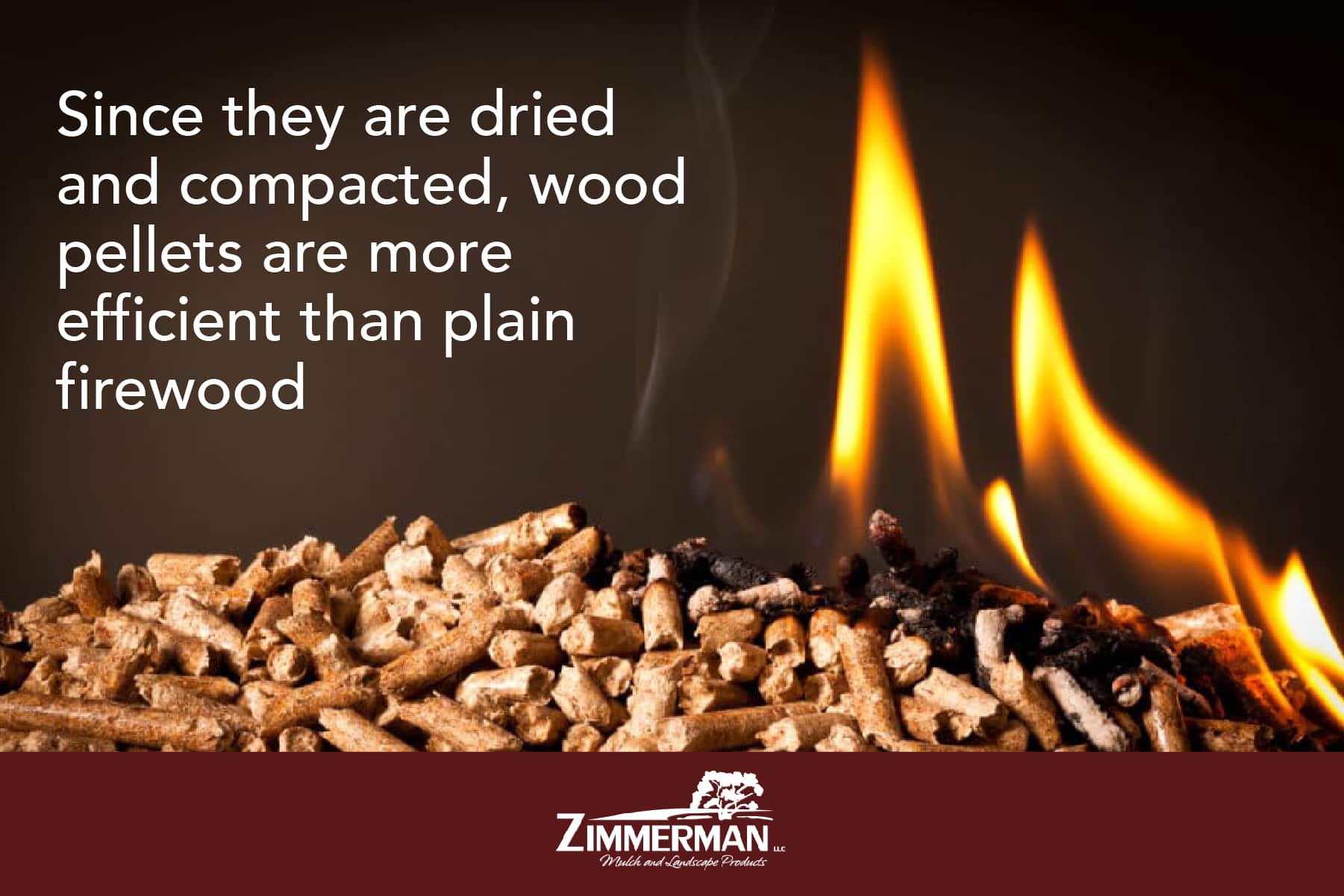
2. Less ash
Because they are dried and compacted, wood pellets burn clean and leave very little ash or creosote behind. That means less cleanup and less chance of chimney fires.
3. Easy storage
Wood pellets come in convenient 40 lb bags, which are easy to store. You can keep them pretty much anywhere as long as they are sealed. Just ensure the pellets don’t get wet, as that ruins them.
4. Manageable to handle
Think about trying to jam an oddly shaped log into a fireplace. Now think about pouring a bucket of wood pellets into a hopper. There is a world of difference!
Wood pellets are much easier to handle than some fuel types, especially if you are older or have back issues or other injuries.
5. Inexpensive
Pellet fuel is a reasonably cost-effective way to heat your home. Here is a cost comparison chart for different fuels, according to Pelletheat.org. The chart compares the cost per million BTU, taking appliance efficiency into account, according to national averages.
Cost per million BTU:
- Natural Gas - $15.38
- Hardwood - $15.87
- Wood Pellets - $19.15
- Fuel Oil - $30.19
- Electricity - $35.17
- Propane - $41.13
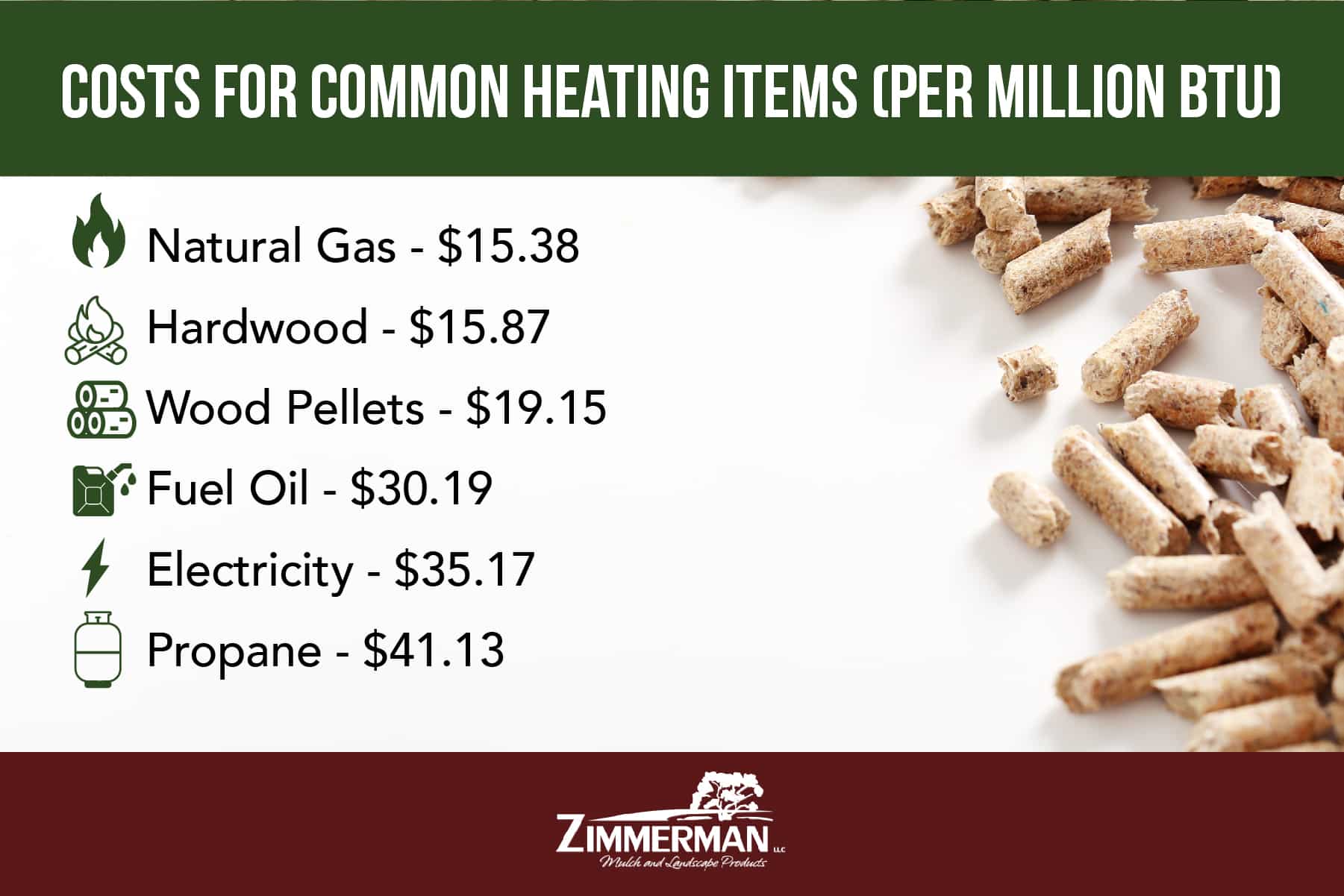
The fuels are listed from cheapest to most expensive, and as you can see, pellets are third on the list, after natural gas and hardwood. You can visit the site via the link above and enter your amounts in the chart if you want more specific numbers.
6. Environmentally friendly
Here are a few reasons why wood pellets are an eco-friendly fuel:
- The wood pellet manufacturing process uses scrap wood that could otherwise end up in landfills.
- Pellets burn cleanly and release very few air contaminants.
- Wood is a renewable resource.
These characteristics make wood pellets an excellent choice for those who want to take care of the environment.
7. Clean
Wood pellets can spill, which can be messy, but other than that, they are pretty clean. Dirt, mud, and bark chips won't get tracked into your house like firewood, and you can easily store them in a closed container.
Plus, they burn clean and don't leave a lot of ash, so you won't have to clean your stove too often.
Types Of Wood Pellets
Are all wood pellets created equal?
Not necessarily!
There are different types of pellets, and if you use pellets as your heat source or for cooking food, you should be educated about the differences.
Premium vs. Standard
For starters, there are two primary grades of wood pellets:
- Premium
- Standard
Premium wood pellets are pure hardwood or softwood, with no bark or other substances mixed in. They produce less ash and contain less moisture than standard wood pellets.
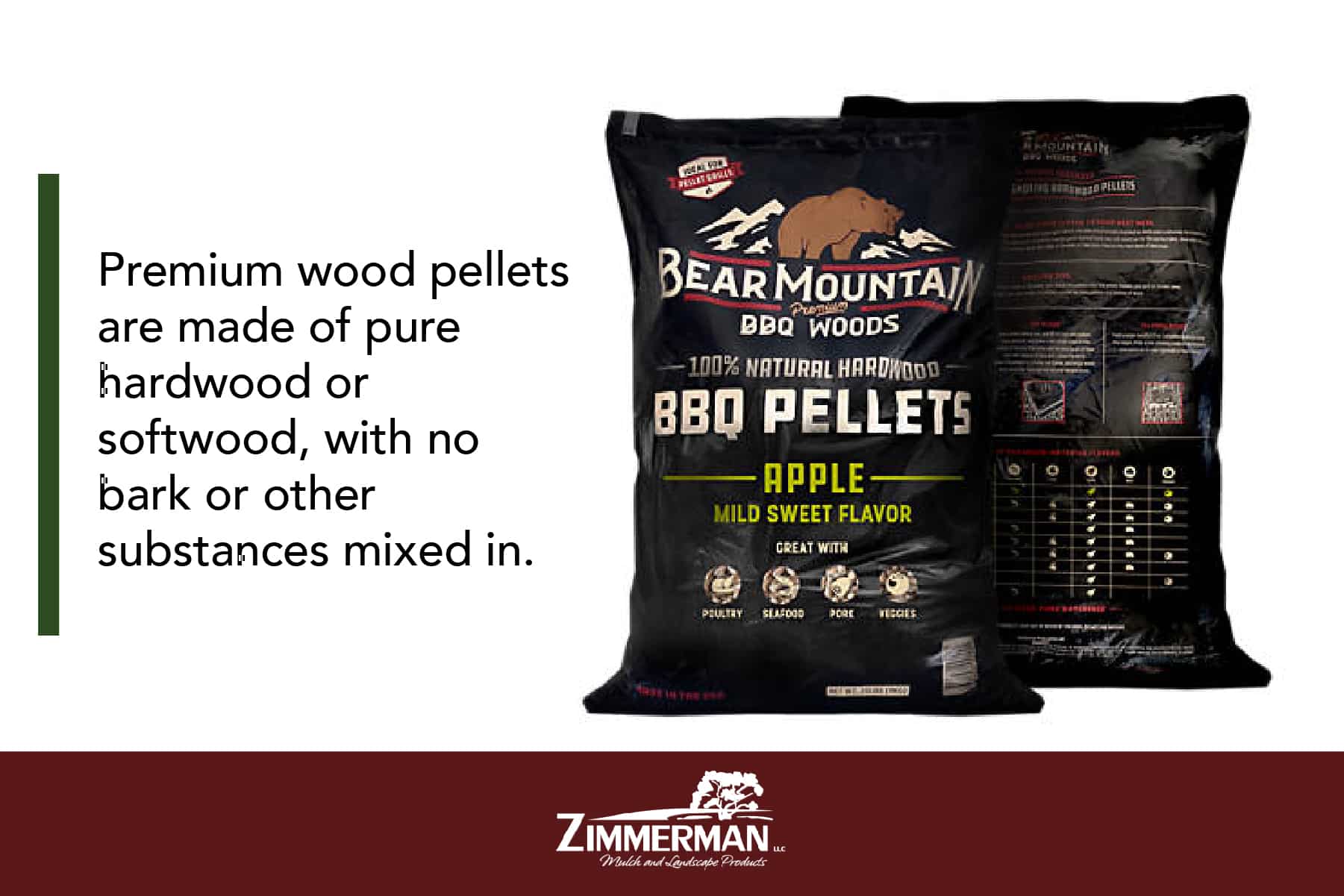
Standard wood pellets may have bark or additives mixed in. They are often produced from waste from the forestry industry and may contain more moisture and produce more ash.
In other words, premium pellets are more expensive but burn hotter and more efficiently than standard wood pellets. If you aren’t sure which one is better for you, you can always crunch the numbers and test them both. Premium pellets are more expensive, but sometimes the price difference is worth it since you will need less to heat your home.
Hardwood vs. Softwood
You can make pellets from different types of wood, and some woods are better than others. The main distinction is hardwood vs. softwood.
Hardwood logs burn longer than softwood logs because hardwood naturally has a higher density.
However, the pellets have the same density when you make hardwood and softwood into pellets. Because of the higher concentration of lignins, softwood pellets have a higher BTU than hardwood pellets.
This can be unclear to people switching over from firewood because it is the opposite of what they are used to. But it’s true-with firewood, hardwood is usually better, and with pellets, softwood is superior.
Heating vs. Food Grade
There is also a distinction between pellets for grills and pellets for heating.
Heating pellets may have bark, leaves, or other additives in them. Or they may be made from wood that would give food a sour taste, like spruce or pine. Heating pellets may leave your food with an unpleasant chemical taste.
Pellets labeled as food grade do not have any additives (with the possible exception of some vegetable-based oil), and they are made from woods known to give food a good flavor.
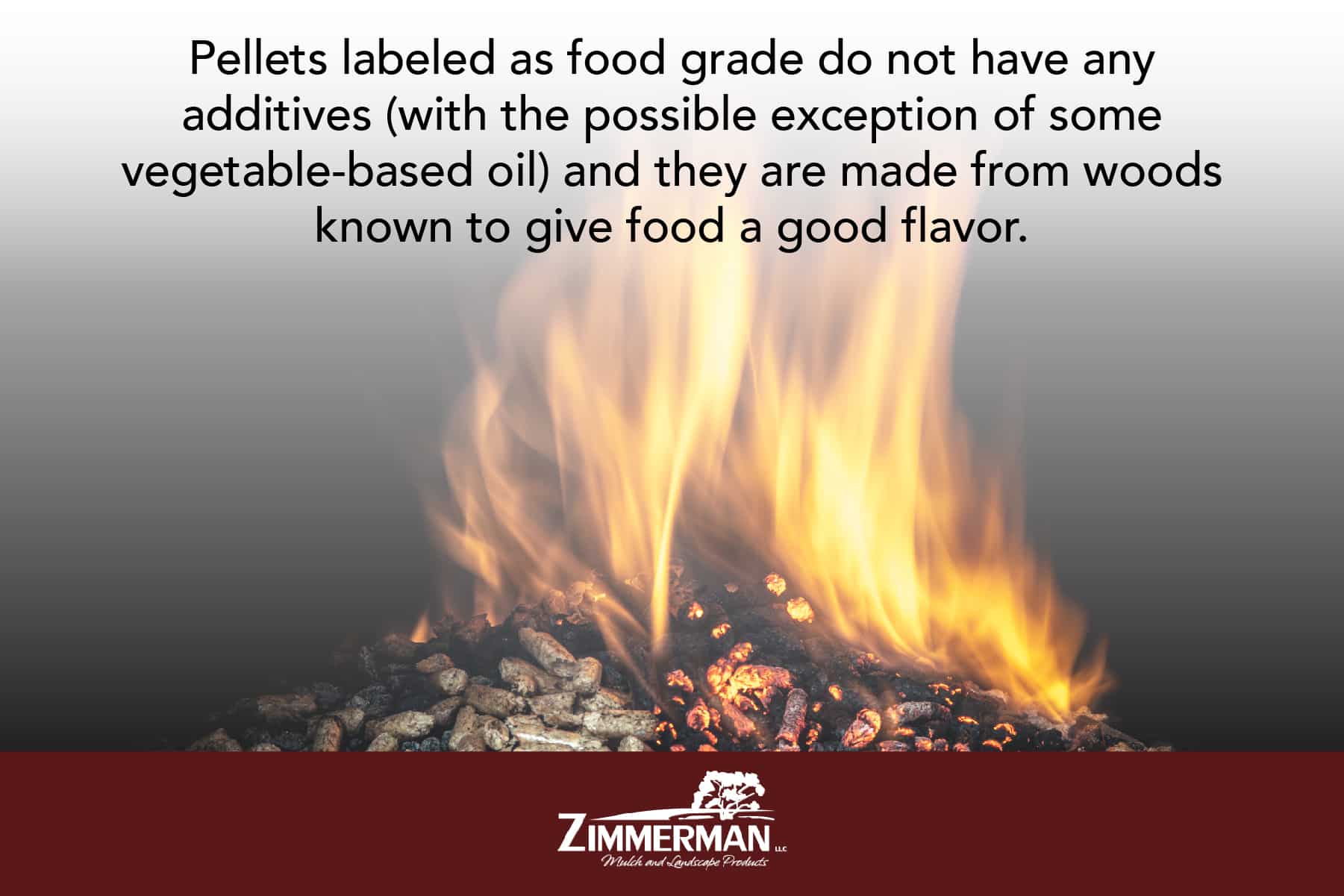
You can find many types of smoker pellets that infuse food with tastes like apple, hickory, and cherry.
Now that we know about the different types of pellets let’s find out how to tell if wood pellets are good or bad quality.
What makes quality wood pellets?
Wood pellets certainly have some things going for them! But to reap their full benefits, you have to get quality pellets.
Good quality wood pellets for grills and stoves burn slowly and cleanly, releasing few harmful emissions into the air. Cheap pellets may be less expensive, but you need more of them to generate the same amount of heat, and they may result in more ash and emissions.
So, what makes a good quality pellet?
Good news - you don’t need fancy testing equipment to tell a good pellet from a bad one. Here are a few ways to know whether or not wood pellets are good quality:
- Look at the general appearance of the pellets. Good pellets will be roughly uniform in length and won’t have many extra long or short pellets, although even the best pellets have some variety.
- Check for “fines,” dust, and small granular pieces at the bottom of the bag. All pellets have some fines, but too many mean the pellets have not been compressed hard enough. Ideally, a 40 lb bag of pellets should have no more than ½ cup of fines at the bottom.
- Take a look at the outside of the pellets. Are they smooth and shiny, or do they have many cracks? Good pellets should have a smooth, polished exterior and few cracks where they could break.
- Smell the pellets. They should smell fresh and woody. If they smell strange, the raw materials may not have been pure, or the manufacturer may have used a binder to make the sawdust stickier.
- Try putting the pellets in a glass of water. Good pellets will be dense enough to sink immediately - don’t buy pellets that float! Good quality pellets should also disintegrate in water quickly. If the pellets don’t spoil, the materials might be impure, or the manufacturer may use too much binder.
- Burn one or two of the pellets and look at the color of the flame. They should light quickly and easily, the flame should be light yellow or brown, and they should leave very little ash behind (the less ash content leftover, the better the pellet.) If the flame is a strange color, it may indicate impurities or too much binder.
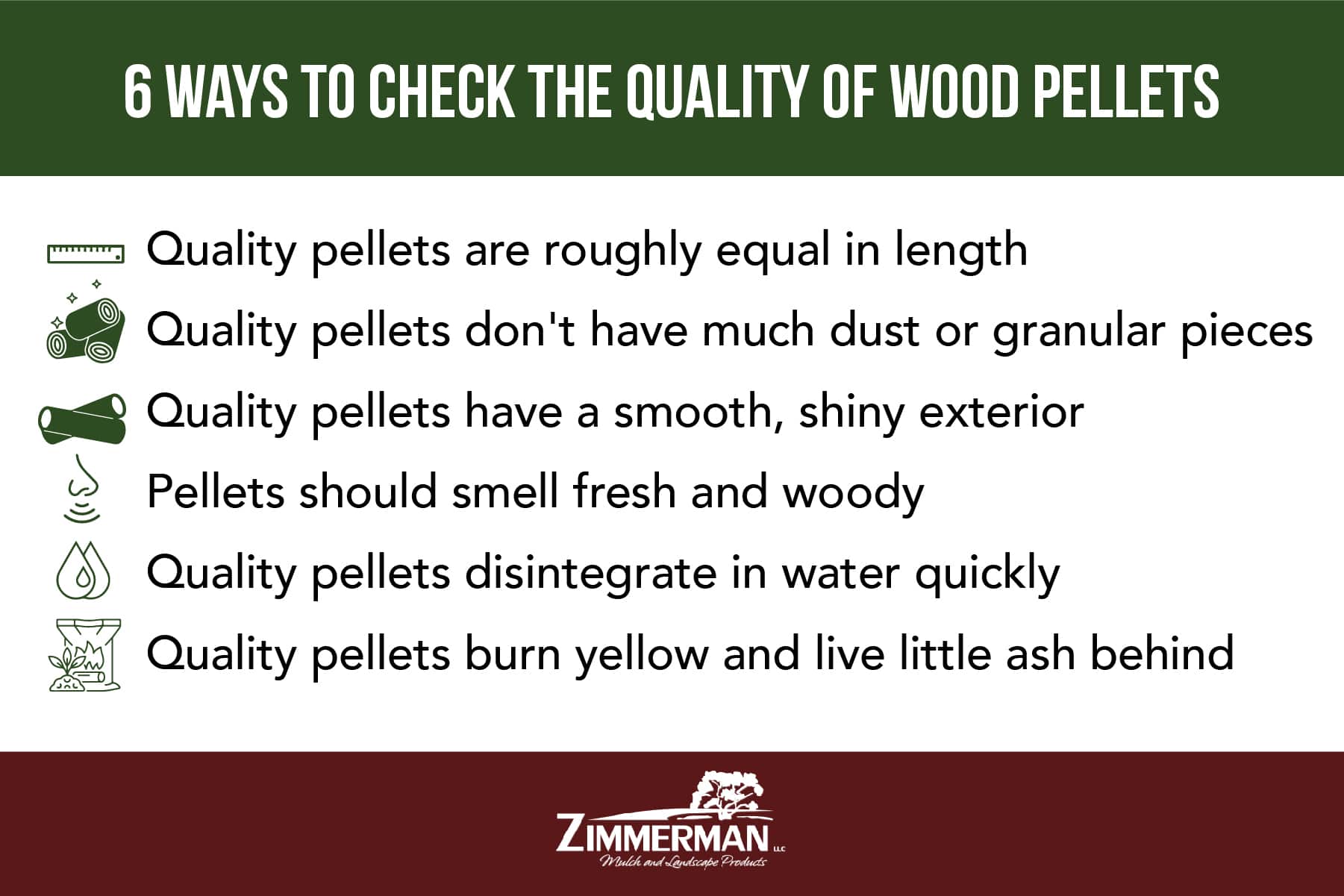
Quality pellets are more expensive than mediocre ones, but the better your pellets are, the fewer you need to use them, and the longer they last. Using quality pellets may also extend the life of your stove and cut maintenance costs because you will not have to use your stove as hard.
Uses For Wood Pellets
We have learned about wood pellets and how to distinguish the good from the bad.
Now, let’s get practical. What can you use wood pellets for?
Here are a few of the main ways you can use wood pellets.
In stoves
If you buy a pellet stove, wood pellets are an efficient and cost-effective way to heat your home. They have higher BTUs than traditional firewood and involve much less hassle.
Think about it: you don’t have to cut, split, or stack wood pellets, and you won’t track a lot of dirt and bark into your home bringing them in. And they are much easier to store and handle than wood, especially if you are elderly or injured.
In pellet grills
Certain types of grills use pellets as their heat source. The pros of pellet grills include the following:
- They have unmatched heat control. You can set a pellet grill to precise temperatures and completely control how your food is cooked.
- They are easy to use - plug them into an outlet, fill the hopper with pellets, and you are ready to go!
- Pellet grills give food a lovely, smoky flavor.
Pellets for grills are perfect for those who love to grill without the hassle of lighting and cleaning up charcoal.
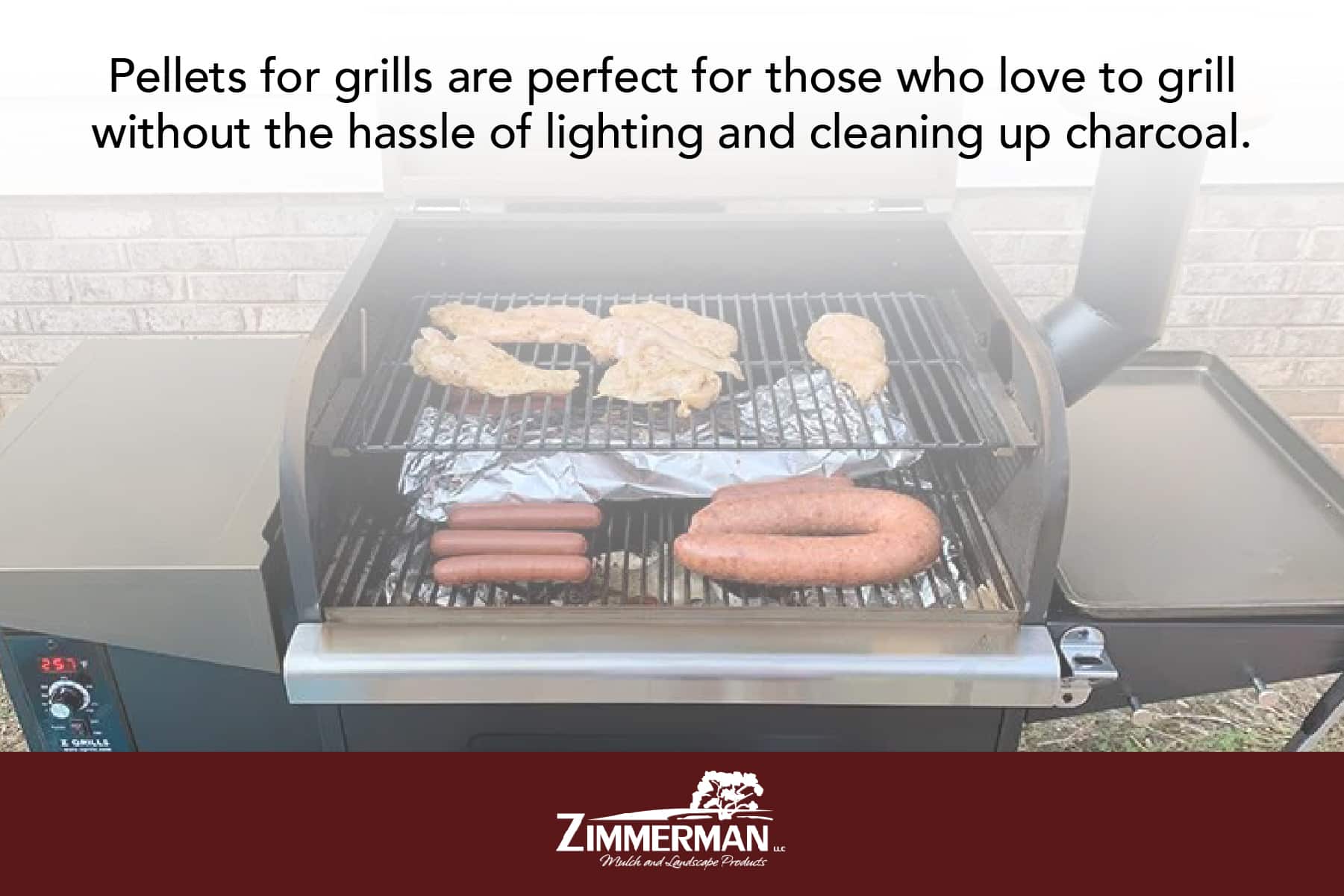
In pellet smokers
Similar to pellet grills (in some cases, they are the same,) pellet smokers are another way to use wood pellets. You don't generally get the intensity of flavor with a pellet smoker that you do with charcoal, but you have more options with pellets, as they come in many different flavors. Different flavors of pellets infuse your meat with different, subtle tastes.
If you want to know more about the different flavors of smoker pellets and how to use them, check out this guide to Traeger's best pellets for smoking.
For generating power
If we go beyond the home, wood pellets are often used to generate power for large plants, such as thermal power plants, because they have a high heat value and emit very few contaminants. The lack of contaminants makes them preferable to fossil fuels.
For animal bedding
Wood pellets are a popular choice for animal bedding among experienced owners and are particularly good for those short on storage space. The pellets are compact for storage but expand and break apart when wet. So one 1.5 cubic foot bag of wood pellets will expand to nearly four cubic feet of bedding!
To prepare the bedding, properly wet the pellets, watch them expand, and spread them in the desired area.
As cat litter
If you spend a fortune on cat litter, consider switching to a cheaper alternative - wood pellets work just fine! You can buy wood pellets marketed specifically for cat litter, but they are usually the same as those sold for fuel, so either works.
CONCLUSION
Now you know all about wood pellets, their uses, benefits, and how to distinguish the good from the bad.
We hope this helps you make an informed decision about whether or not wood pellets are suitable for your situation!
To buy some wood pellets today, visit our online store or our brick-and-mortar location at 75 E Kercher Ave, Lebanon, PA 17046.
While you are there, take a look at some of our other products, which include:
And more!
If you have any additional questions, don't hesitate to call. We look forward to hearing from you!




